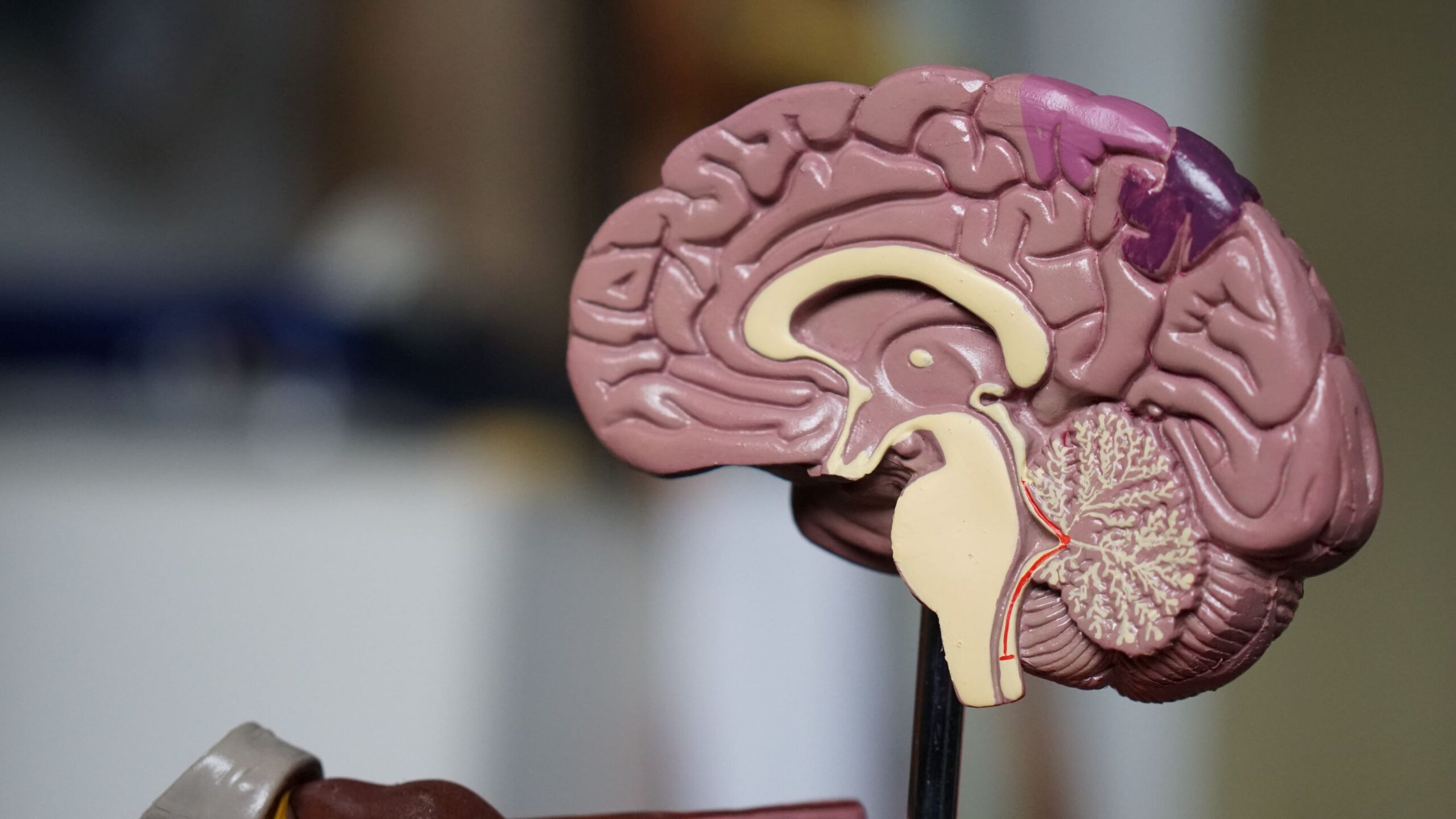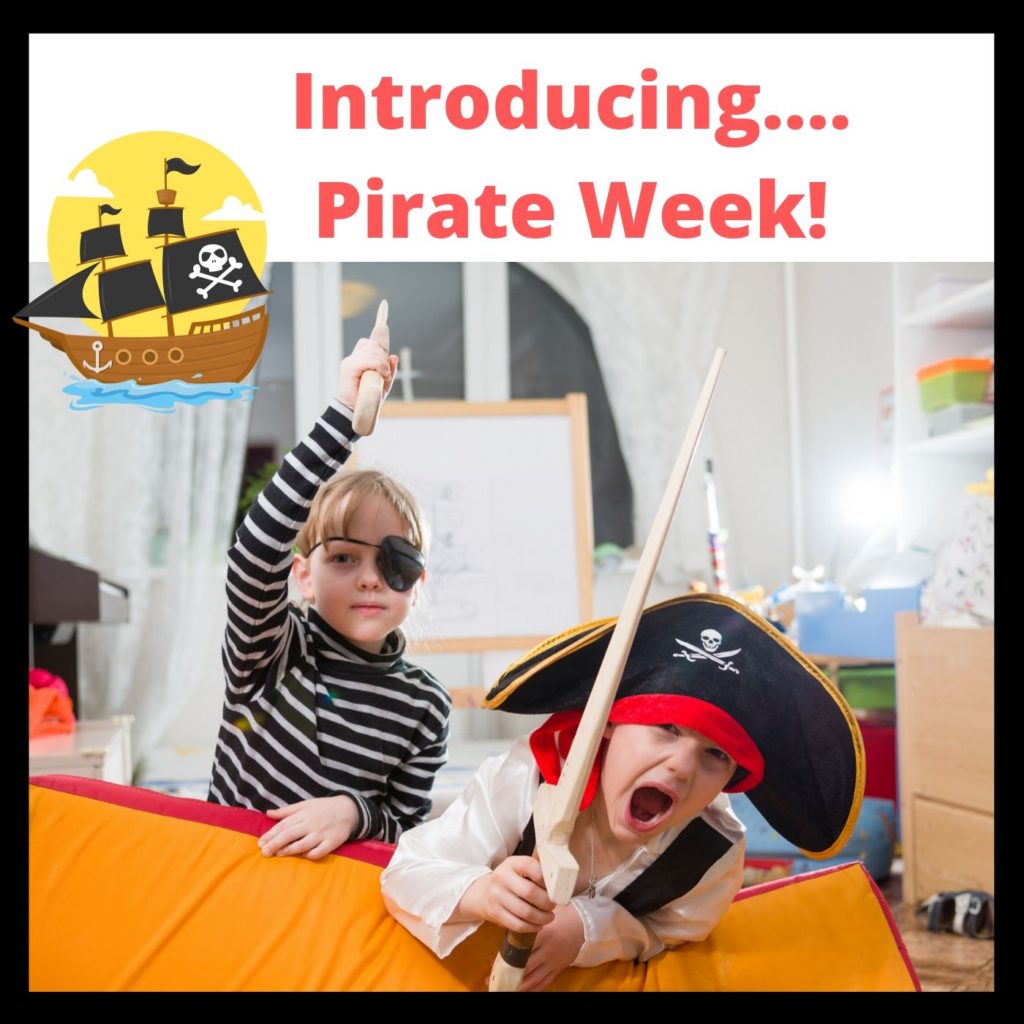We just finished a unit all about the human body. Since I work with younger students (Kindergarten- 2nd grade) I wanted to make the unit very hands-on and engaging. I didn’t want to try and dive too deep in a lot of technical anatomy. I just wanted them to understand the basic function of our main body parts. Here’s what we did…
Life-size Body
I started the unit by giving each small group a set of printable organs. I asked them to guess where they thought the organs went. The funniest part was the trachea. They had no idea what that was and some of them put it on top of the brain hahaha. This activity really builds interest for students and is a great opening to the unit. Get the free printable organs here.
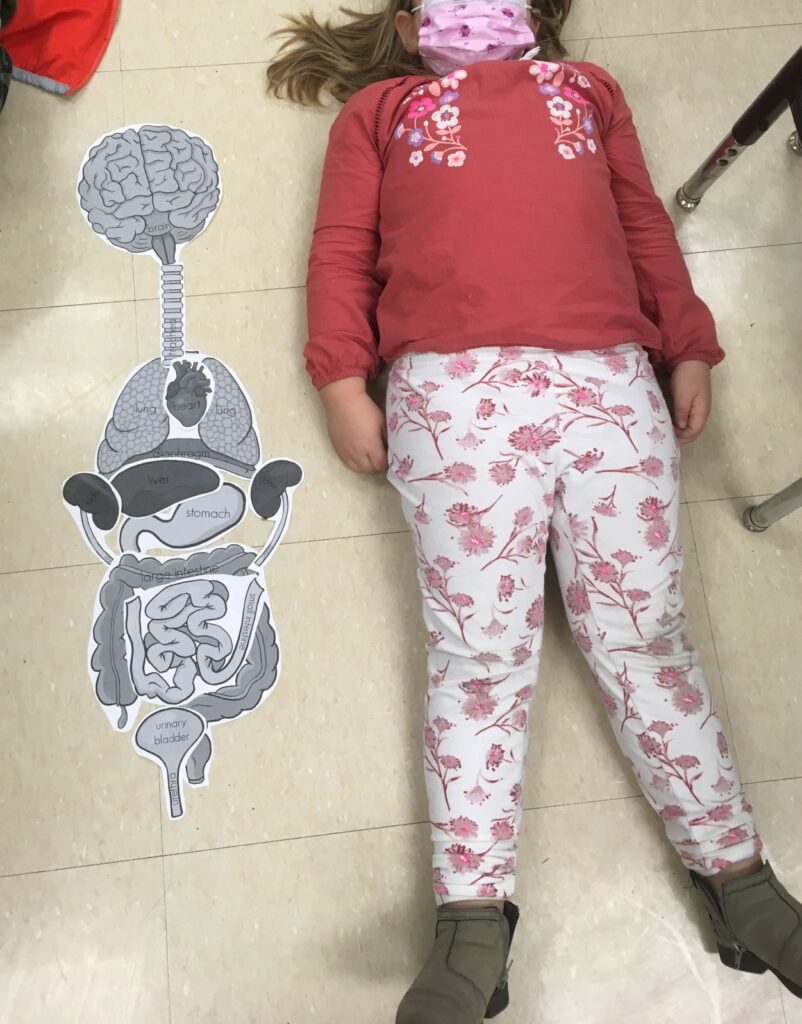
Skeletons
For bones I started by demonstrating why bones are important with this Stem challenge. They had to seeing how tall you can build a leg using only playdough. Then, I gave them a straw and asked them to build a leg with the playdough and straw. Read about this idea and others from Babblingabby
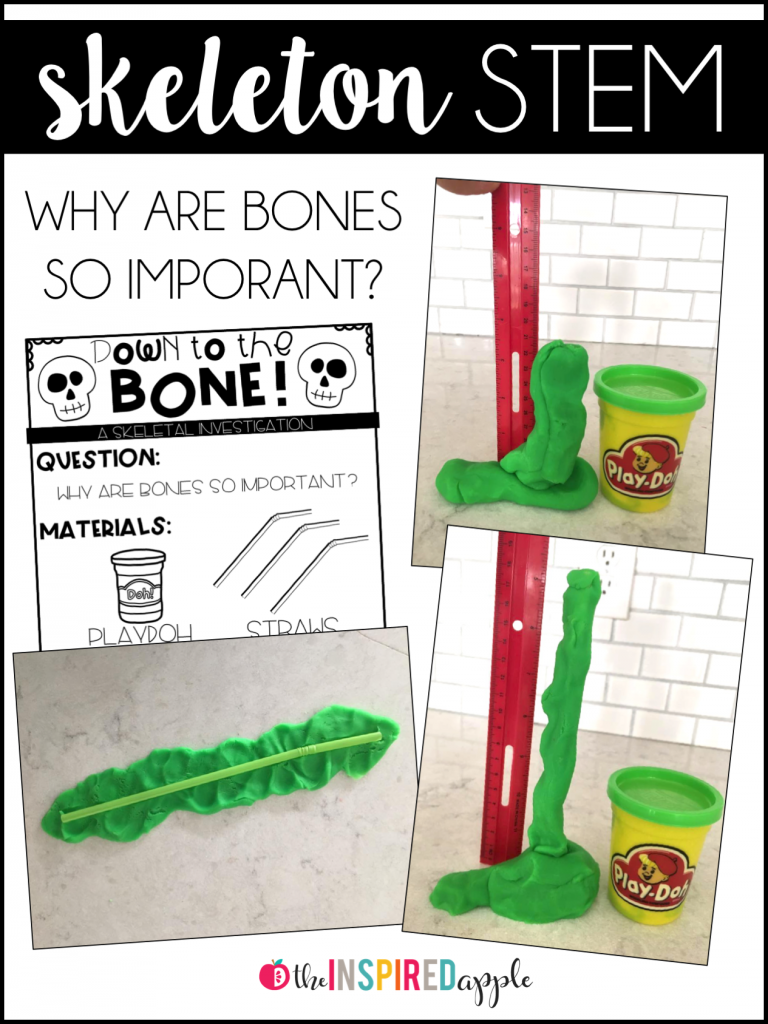
Next, I printed off a paper skeleton and had kids race to put the skeleton together correctly. When I did it with my class I put them into groups and created a relay, giving each student 2 bones. Here is a free printable skeleton you can use.
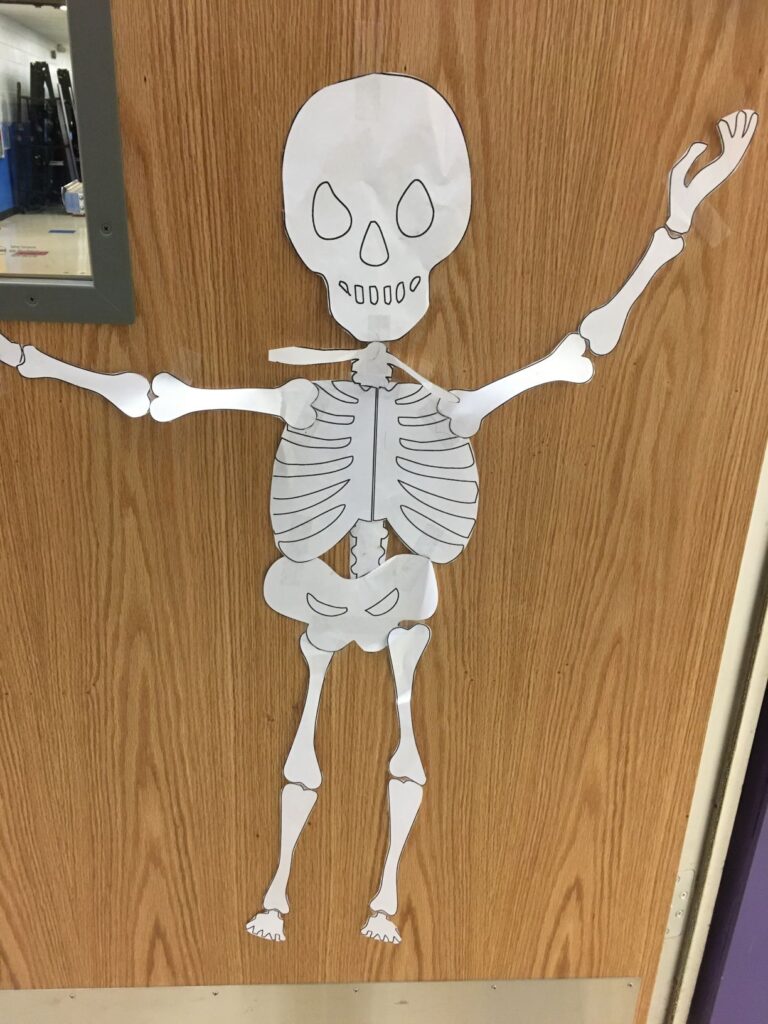
Muscles
We discovered how muscles help our body move by making this “robotic” hand out of string, straws and cardboard. I have made this numerous times and students always find it so cool. Read here for details.
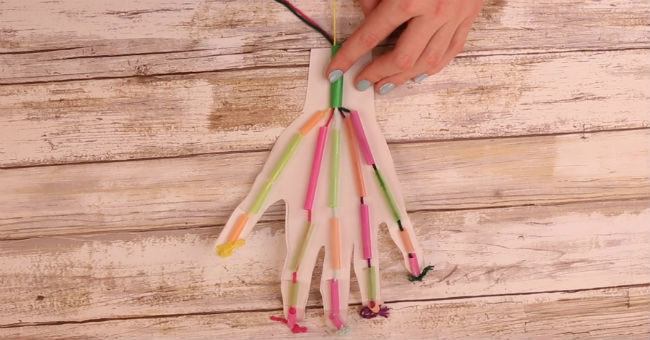
Blood
Next, we talked about the 4 main components of blood and then made blood in a bottle. *Note, don’t use candy or food items because they will dissolve in the liquid. Instead of using water bottles you could also do this activity using a Ziplock bag. Click here to read more about how to make it.

Lungs
To learn about the lungs I had students all lay down on their backs. They put a stuffed animal/toy on their belly and watched as it went up and down. Then, we made our own set of lungs out of paper bags. You can find the instructions here. I also really like this idea for making lungs out of plastic bags. Or you can go really elaborate and make lungs in a bottle!
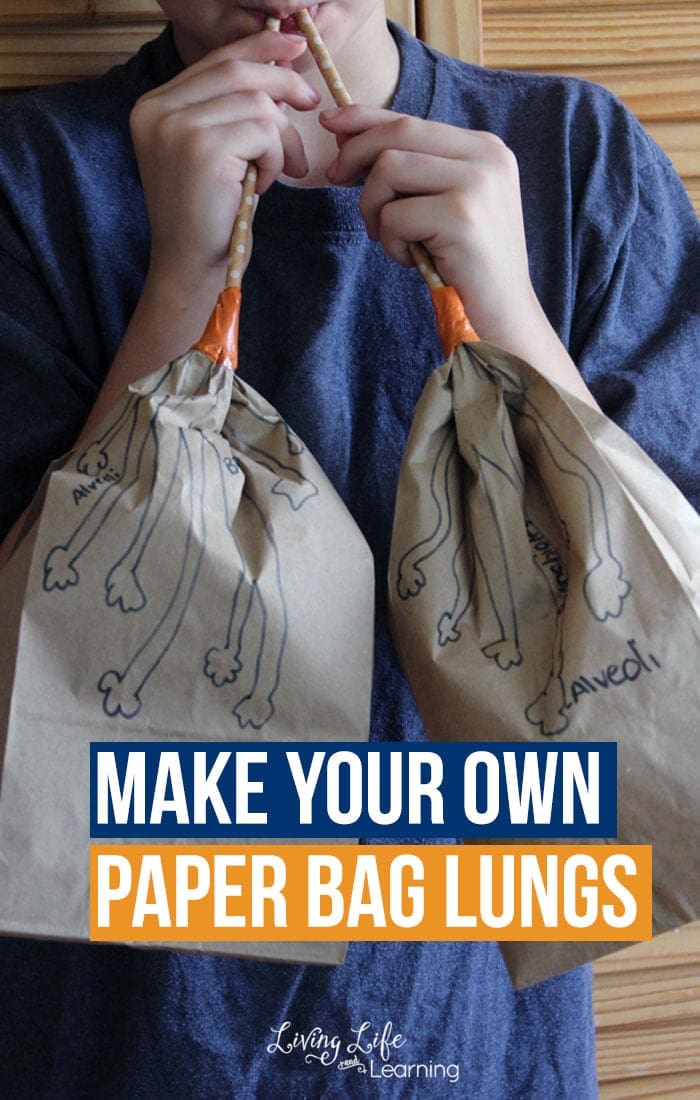
Heart
I couldn’t find a lot of activities about the heart. Please comment below if you have an idea! We decided to just color a picture of the heart. You can also use different colored thread and weave it through a paper heart if you want to help kids see how the blood flows. It’s a little bit difficult for young kids to string the thread though. My 4th graders had a hard time doing it years ago. Instructions here for the string heart.
Digestive System
This was my favorite part of the whole human body unit! My students thought it was pretty fun also (but some thought it was too gross). Show a picture of the digestive system and briefly discuss each activity that happens while digesting food. Now, demonstrate this! We used a peanut butter sandwich, milk and French fries. The French fries were a little hard to mash up because they were cold.
Read here about how to cut, mash and sift the food just like our body does.
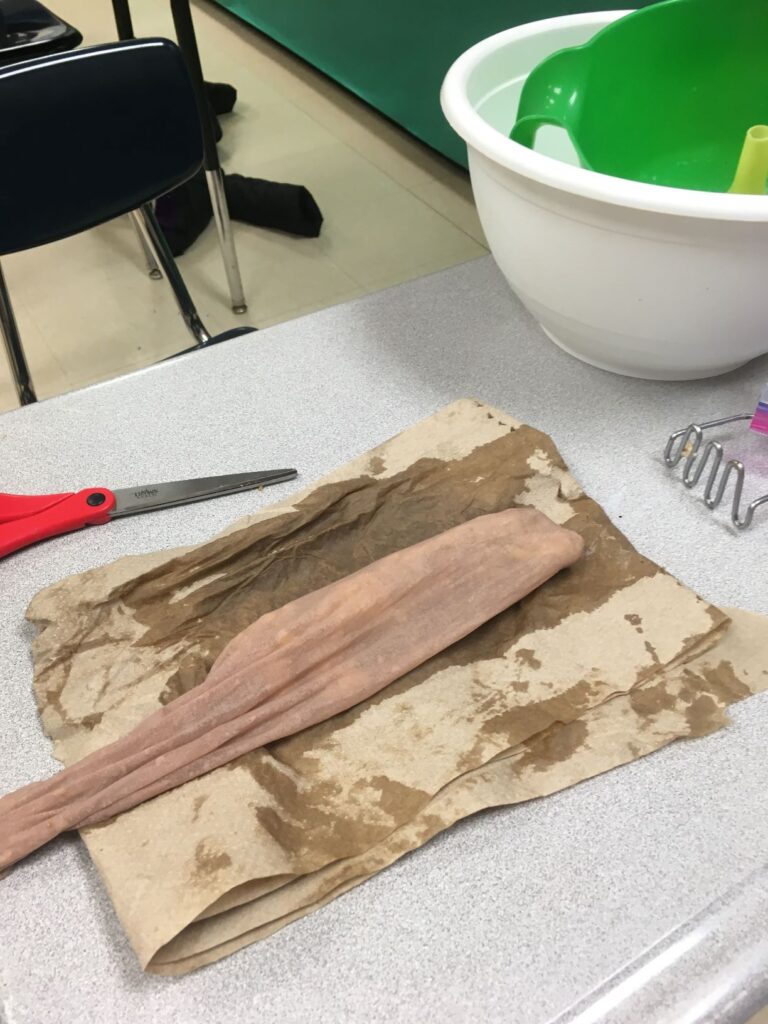
Teeth
We did an experiment to find out what happens to our teeth when we eat or drink too much sugar (perfect timing since Halloween is next week). I got the idea from feelslikehomeblog. Just like suggested, we soaked an egg in cups of different liquids: Coke, grape juice, water and low-sugar Gatorade. I told them that the outer shell of the egg is made of calcium just like the outer part of our teeth. Different things we eat and drink can stain and erode the hard part of our teeth. Students were amazed at what the eggs looked like after only 12 hours. Then we tried to use toothpaste to brush the stains off the egg and found that it is very hard to get off. I think it would be fun to try and see if the experiment works with sugary food as well. Maybe water with a chocolate candy bar in it or gum? If someone tries it let me know!
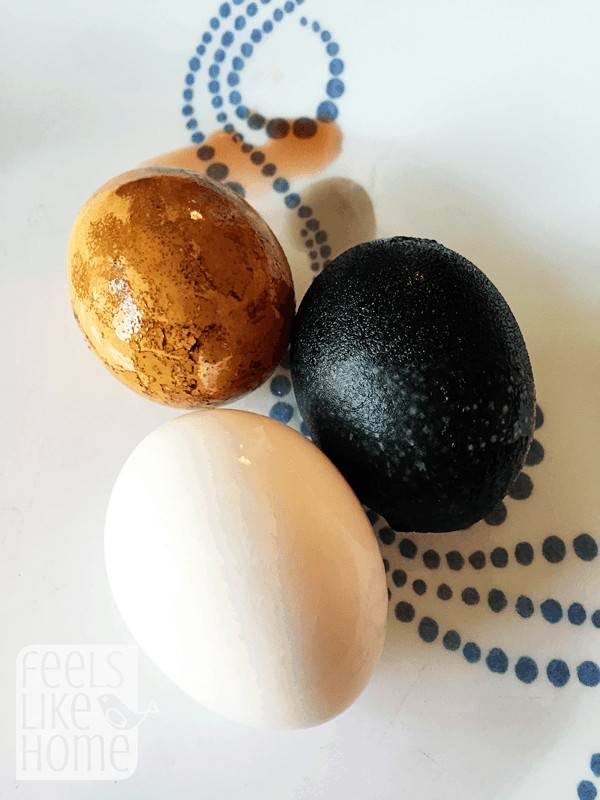
Let me know if you have any other cool activities related to the human body!
Get ideas for other units by reading some of my posts below.
